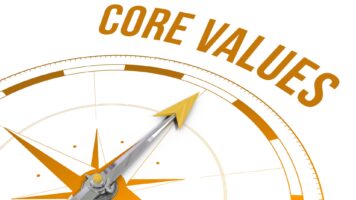Restraint in a New Era of Responsibility

The tragic wake of the events at Sandy Hook Elementary School started in Newtown, Connecticut, but rushed over the rest of the nation as story after story in the media brought the local horror to a grand stage. The loss is so sad, the act is so reprehensible, and the implications are far-reaching. Cries for something, anything, to be done have risen high and loud.
[caption id="attachment_8207" align="alignright" width="125"] Responsibility in 3 R's[/caption]
In the midst of public hearings in Connecticut at the end of January, regarding gun violence in schools, one grieving father, Mr. Mark Mattioli spoke. His son, 6-year-old James, died in the Sandy Hook school building as a result of the mass shooting. This father lifted his voice in favor of a return to decency and civility, rather than a rush to create new laws or mandates about guns.
In the horror and danger of this man’s grief, Mr. Mattioli found the opportunity to speak out- and he spoke out in favor of restraint.
Restraint in a New Era of Responsibility requires one to TAP into a set of intentional behaviors:
Take stock of what is already available to meet the current challenge or fulfill the current need. Is there already a policy or law in place? Do we already have the tools on-hand to address this need? Who can we pull as a resource in this situation?
Answer: What is the reality of this situation? What actually will help those in need? What strain will this course put on everyone else? Are we really pinpointing the cause, or are we just shadowboxing around the issue?
Process: plan, prove, and then proceed with efforts to alleviate the conditions or change the behaviors that lead to want and suffering. More than mere guesswork, this step is about hypothesizing a solution, gathering the supporting proof, and trying it out without being married to any one course of action. Any one of the biggest social issues, business problems, or family ills is worth applying a process to in order to find the best set of solutions.
There is no simple answer to any of the problems that need to be addressed in our society today. In a world of competing interests and agendas, with proponents that in many cases seem willing to utilize disaster to progress their goals, character-based leadership would dictate that we step back, clear our vision, refocus, and proceed with restraint.
What do you think? Is this R in the New Era of Responsibility too passive? Do we really need to leap to the last square in times of turmoil and loss? Or is it possible to go forward reasonably and rationally in order to make long-term, positive, lasting change happen?





Glen, thanks for another great “R” post. Restraint isn’t the opposite of action. It’s wisdom in action. It always take more energy to react wisely than to simply react. Thanks again, Mike…
Thanks Mike- I guess this is the last “R” post on responsibility at least as I set it forth in the 1st post. I hope it is a conversation that gets traction and goes on for a while. I appreciate the chance to post those thoughts here.
I like your thought on wisdom. Restraint when one is tempted to act rashly is truly wisdom, the kind that isn’t exercised very much. It reminds me of stories I’ve read about Lincoln writing out a letter when he was tempted to react harshly and often deciding to keep the letter or trash it rather than sending it to the intended recipient. I’ve thought of that many times when tempted myself.
In tragedies like Newtown, if we keep a sense of decency, which would be to think about the humans involved rather than pulling in politics, we inevitably would follow a more measured, natural and appropriate course of action.
[…] Posted in Change ManagementSelf LeadershipThe tragic wake of the events at Sandy Hook Elementary School started in Newtown, Connecticut, but rushed over the rest of the nation as story after story in the media brought the local horror to a grand… […]